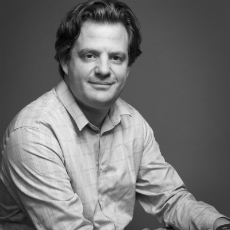As an urbanologist, geographer, historian, and professor, Max Grinnell finds his raison d’etre in describing, critiquing, and analyzing the urban condition. Raised in Seattle and Madison, Wisconsin, Max was educated at the University of Chicago where he received degrees in history, geography, and community development. He’s an expert on urban design, planning, public art, the creative economy, and the history of cities. He has designed and taught courses on urban studies, community development, geography, planning and sociology at the University of Wisconsin, Boston University, the Massachusetts College of Art and Design and the University of Chicago. He is the author of several books including 24 Great Walks in Chicago and Hyde Park, Illinois. Max will be giving a series of lectures and walking tours throughout this season of One Book, One Chicago.
Chicago: The City That Gives
by Max Grinnell
In an era of self-reflection (or is it just an era of the selfie?) my mind stumbled along this theme to what Chicago had given me. After all, the cultural cornucopia that has sprung forth from Chicago’s El-bound core and its expansive grid is well documented by others, so I’ll refrain from offering any further enconomia. I’ve been here over two decades, so I’ll pick out a few strands amidst the many baubles that Chicago has presented me through long peripatetic walks.
My first walk through Chicago gave me quite a bit and subsequent walks have been variations on this theme of jarring transitions amidst the city’s built environment. I arrived on a hot and sticky day in 1994 to start college at the University of Chicago, which has been described as the “greatest gathering of juvenile delinquents since the Children’s Crusades”.
After dropping my bags in a former hotel palace on Lake Michigan that had seen better days, I began to walk. Yes, I had walked before during my youth in Seattle, but never quite like this. As I walked down 55th Street in the direction of Hyde Park’s heart, I passed a man in a wheelchair coming out of a dive bar, a clutch of brownstones, several Thai restaurants with wonderfully pungent aromas passing out their wide-open doorways, and a glamorous terra-cotta clad apartment building with a lobby that looked as tired as I felt.
Mind you, this was just the first couple of blocks on my way out west. Imagine my delight when I crossed under a decrepit-looking railroad overpass and heard the rumble of commuter trains. There was simply nothing like this in back in the Emerald City. I felt as if the entire structure might collapse if I dallied but an extra moment. As I moved on, I came out into the light of a widened 55th Street that seemed to say “Something’s changed.”
It had all changed, indeed. It was at this point that 55th Street had been expanded as part of urban renewal, that process of reducing, simmering, and evicting buildings and people by any means necessary some four decades before. I walked west in front of the Hyde Park Shopping Center, which by that point was home to a garden-variety Walgreens, a candy store, Cohn & Stern’s Clothes for Men, the Hyde Park Cooperative grocery store and a charming Woolworth’s that had a tiny food counter disarmingly close to where they kept the pets for sale.
I looked back under the 55th Street underpass and thought “What a difference”. To my east was the motley crew of buildings that had a bit of dated charm, and to the west was that brave new world that urban renewal had made, complete with I.M. Pei designed apartments, plentiful parking, and shining new buildings that said “Welcome to the mid-century”.
During my walk west to campus, I continued to think about that transition between two built environments, two different ways of urbanism, two contrasting styles of what Chicago was and what it hoped to be. I still think of this walk frequently amidst the many walks that have taken me to throughout every corner of the city
Chicago, I thank you for what you have given me. I’m forever in your debt.




Add a comment to: Guest Blog: Max Grinnell On Chicago: The City That Gives